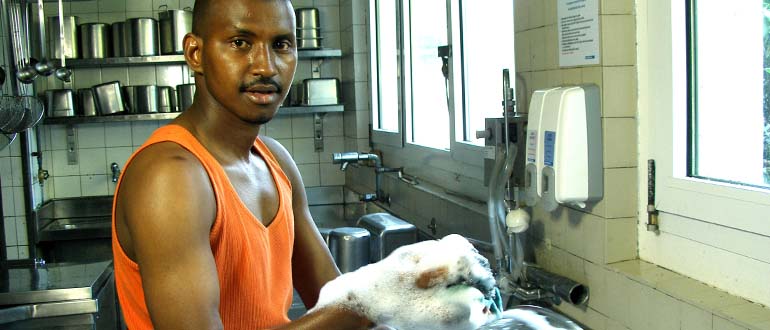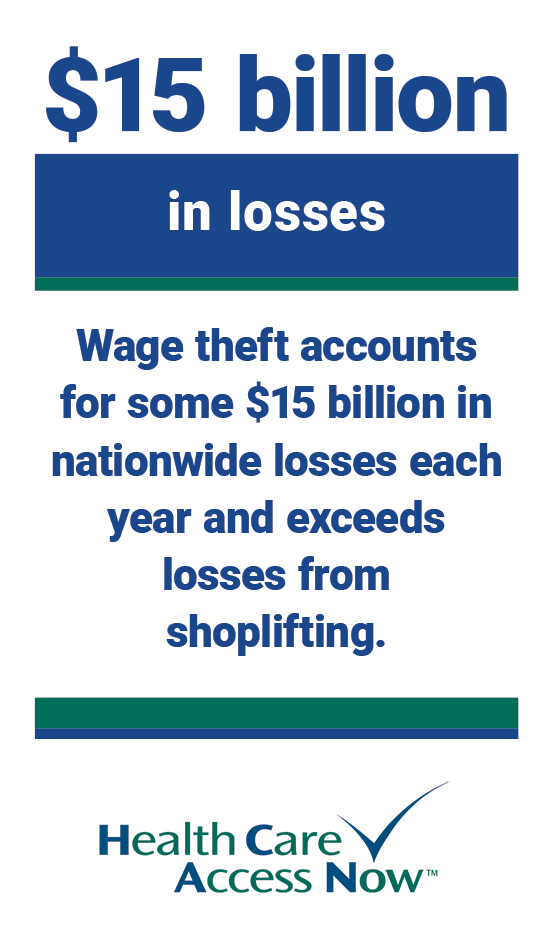Wage theft and unsafe conditions: Immigrant workers


“Everyone has problems at work,” says Brennan Grayson, Director, Cincinnati Interfaith Workers Center (CIWC). Those problems might be small or big—a conflict with a coworker or being passed over for a promotion because of racial discrimination, as examples.
“But when you’re an immigrant, work issues can be vastly complicated. Do you and your boss speak the same language? Often not. Do you and your coworkers have the same rights? Absolutely. Can the bosses call the cops or ICE [U.S. Immigration and Customs Enforcement] on you if you speak up? Newsflash: They absolutely cannot—even though some bosses may pretend to have that power.
“Immigrant and labor rights are closely connected,” Grayson says, but he notes that the issues are often politically separated. He says that the work his organization does has a justice orientation in all areas.
“We help people form teams where they can counteract the oppression they’re facing in their own way and on their own terms,” he says.
[Read more: What is wage theft?]
Belief in making a difference
One arm of CIWC’s work is ending wage theft. Wage theft can be defined as an employer withholding money earned or other benefits, such as breaks. This practice happens widely, with an estimated $3.4 billion in stolen wages having been recovered by the U.S. Department of Labor from 2017-2020.
Wage theft can happen to any worker, but it is more likely to happen to low-wage workers—and even more likely to happen to immigrant workers. As Nonprofit Quarterly puts it, “Wage theft among immigrant workers is enabled by a host of factors, including a lack of knowledge of wage-and-hour rules, worker vulnerability to exploitation, threats of retaliation and deportation, and poor access to legal services.”
Workers who recognize that they are a victim of wage theft can call CIWC to help overcome barriers to civil justice and the legal system.
CIWC has worked on cases that take nearly a decade to get resolved—and the payoff can sometimes seem disproportionate to the amount of effort necessary to take on the system. That’s why Grayson stresses that those who engage with CIWC usually have a bigger purpose in mind. “They understand that they may only gain a few hundred dollars from winning the case—but that their work will prevent it from happening to someone else,” he says.
Health and safety
Injury on the job is another issue that low-wage and immigrant workers face disproportionately. Grayson has encountered well-meaning health professionals who direct workers away from the workers’ compensation system.
Doing so inadvertently helps employers perpetuate a system of fear around reporting unsafe conditions and resultant injuries by circumventing official channels. It also denies the injured patients and their doctors access to the funds already set aside for job-related injuries.
“Then, that employer, who is hurting people, doesn’t have to pay higher insurance premiums, and the worker is kept out of the worker’s comp system,” Grayson says.
What can happen is a snowball effect of pain and poverty for the affected worker. “If you’re injured on the job and kept out of the system, you’re trying to figure out how to get back into that job that hurt you as soon as possible—and you’re going to get hurt again,” he says. “Or you might not be able to swing your second job anymore because it’s too much on your body. That’s life for thousands of people.”
Grayson says, “In Ohio, there is no immigration test for injured workers. If you’re injured on the job, you can file a claim.”
CIWC connects workers with allies to support them through the claims process. This helps safeguard the worker’s job and their health.






